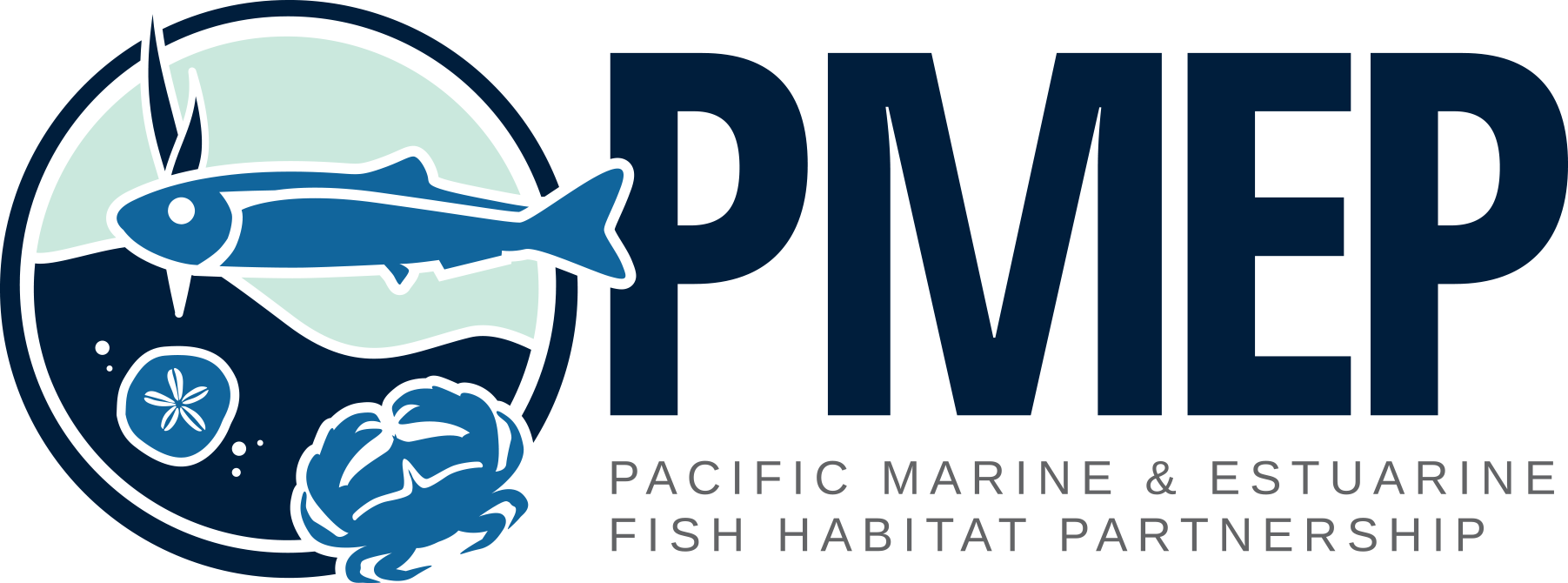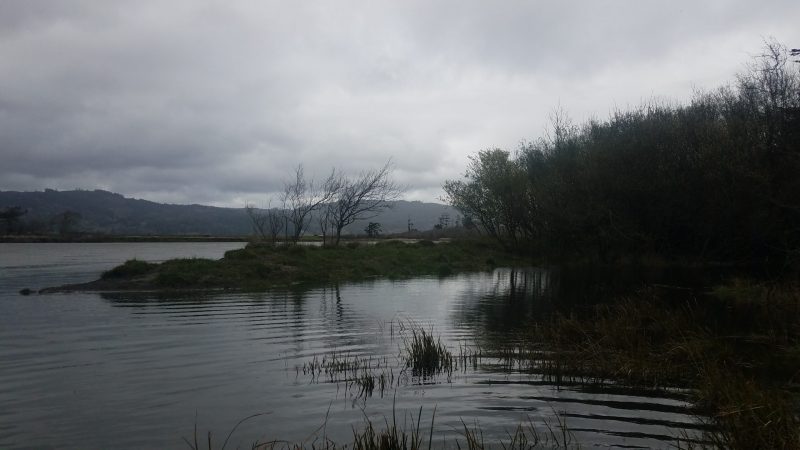The Smith River Alliance is leading this project, which will enhance a naturally occurring backwater feature on the south bank of the Smith River estuary, benefitting Southern Oregon and Northern Coastal California ESU Coho salmon, SONCC Chinook salmon, and Klamath Mountain Province Steelhead. The project will increase channel complexity along the mainstem Smith River and addresses impaired estuary function by increasing the quantity and quality of off-channel slow water rearing habitat and benefit up to 8,000 outmigrating Coho salmon smolts. Tidally influenced backwater habitat is extremely beneficial but rare in the Smith River estuary and this project will improve connectivity to this limited habitat. The project will enhance the hydrologic connection to 660 lineal feet of off-channel habitat, and increase the duration and range of flows that migrating and rearing juvenile Coho salmon can access the off-channel habitat feature by 94%. Two large wood structures containing 14 logs will be installed at the entrance and up to 13 single log structures will be installed throughout the backwater. The riparian area will be planted with native species including: 1,386 wetland plants, 114 herbaceous understory plants, 78 shrubs, and 120 trees. Livestock exclusion fencing will be installed along 1,800 feet to permanently exclude cattle from 51 acres of the Smith River estuary.
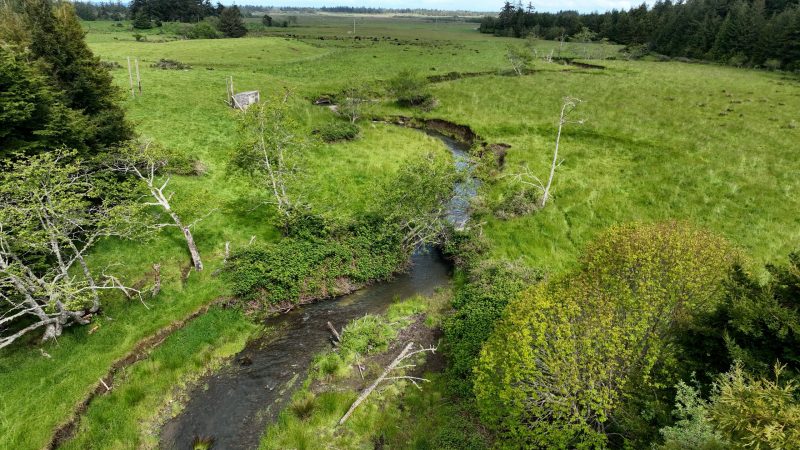
- July 4, 2023
- Joan Drinkwin
- Announcement, Funding
- 0 comments
The Curry Soil and Water Conservation District will restore channel processes, floodplain connectivity, instream and off-channel habitat, and 19 acres of native riparian forest on 2,500 feet of Morton Creek, which at present, is deeply incised and severely impacted by grazing. Restoration will enhance rearing, spawning, and migration habitat for coho salmon and steelhead; as well as Pacific lamprey. Restoration will improve water quality and reduce sedimentation in ~470 acres of freshwater wetland adjacent to the New River estuary. Project will also install riparian fencing and off-channel water to facilitate livestock grazing outside the stream corridor. The project goals are to improve water quality and instream habitat; restore floodplain connectivity and dynamic fluvial processes; enhance fish migration between upstream spawning and downstream rearing habitat; stabilize chronic bank erosion; and prevent pollutant loading to downstream fresh water wetlands and the New River estuary. The project involves construction of 2,500 feet of stream channel, 5.4 acres of floodplain topography, 800 feet of off-channel aquatic habitat, 20-30 instream log structures, 2 vehicle bridges, 2,500 feet of livestock exclusion fence, and an off-stream livestock water system; and the project will plant and maintain 21,000 seedlings, to restore 19 acres of native riparian forest.
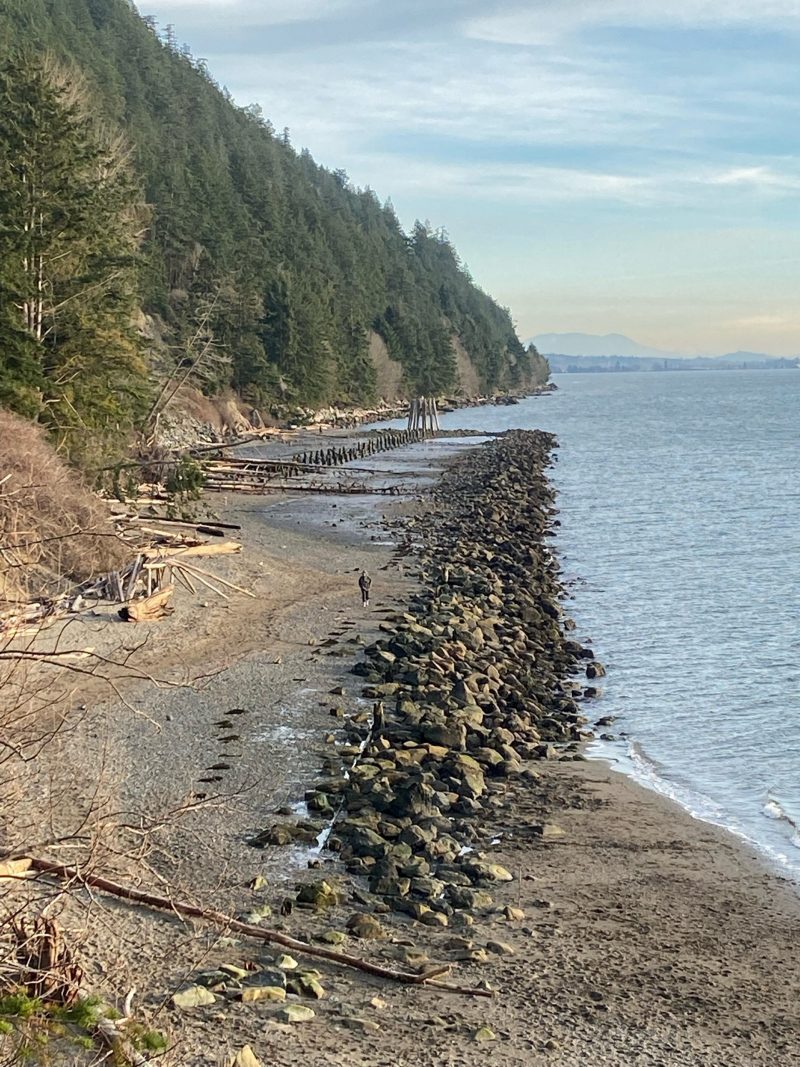
- June 20, 2023
- Joan Drinkwin
- Announcement, Funding
- 0 comments
The Clayton Beach Nearshore Restoration Project project will remove 1,200LF of shore armor and pilings to improve sediment transport processes and allow for landward translation of eelgrass beds and nearshore habitats to adapt to sea level rise. The project will restore over 9 acres of beach, backwater, and riparian habitat to improve spawning habitat for surf smelt and Pacific sand lance, improve public access to Clayton Beach, and provide interpretation of cultural and historical uses and ecosystem dynamics. Sponsor Northwest Straits Marine Conservation Foundation seeks to address prey species availability through restoration of coastal processes and forage fish spawning habitats. Failed and unnecessary armor is burying spawning habitat of surf smelt and sand lance, two critical prey species for salmonids and marine birds. Estimates of sea-level rise suggest that on beaches with armored shoreline, substantial forage fish spawning habitat could be lost in the next few decades and most might be lost by 2100.
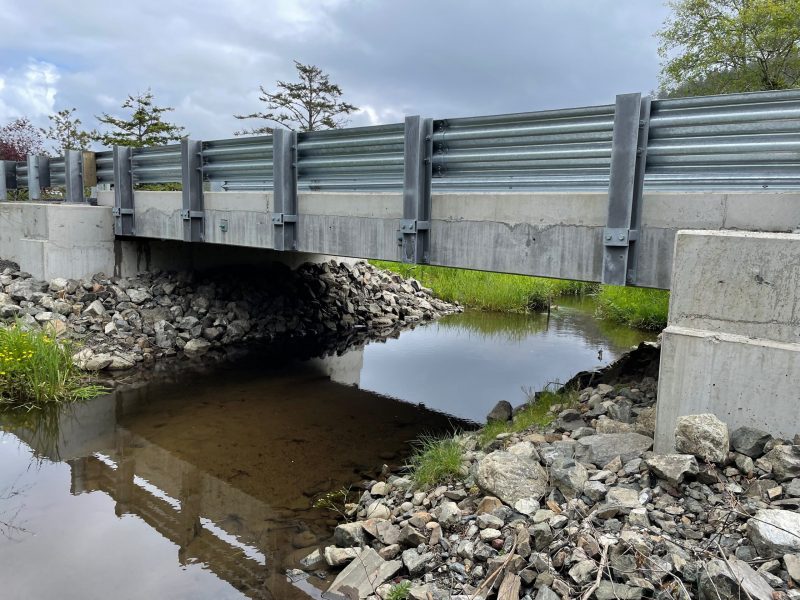
- March 26, 2023
- Joan Drinkwin
- Announcement
- 0 comments
The Pacific Marine & Estuarine Fish Habitat Partnership (PMEP) and the Nestucca, Neskowin & Sand Lake Watersheds Council are pleased to announce that the Neskowin Fish Passage Improvement Project has been named to the National Fish Habitat Partnership 2022 Waters to Watch list. The Waters to Watch Program annually highlights ten outstanding fish habitat restoration projects nationwide to focus attention on rivers, streams and shores that will be cleaner and healthier habitats for the many fish and wildlife species and people who call these areas home.
The Neskowin Fish Passage Improvement Project project included a strong partnership with the Tillamook County Public Works Department and restored fish passage within the Neskowin Estuary-Wetland complex benefiting multiple species including ESA listed Coho salmon at the same time providing emergency egress to the local community during flooding events. The project increased access to 250 acres of riverine estuary, tidal scrub/shrub and tidal forest wetland rearing habitat and 5 miles of spawning habitat for Coho salmon, Chinook salmon, Chum salmon, Steelhead trout, Pacific lamprey, and Cutthroat trout. The project replaced three undersized culverts and two tidegates with two 32’ bridges sized to meet federal and state fish passage requirements.
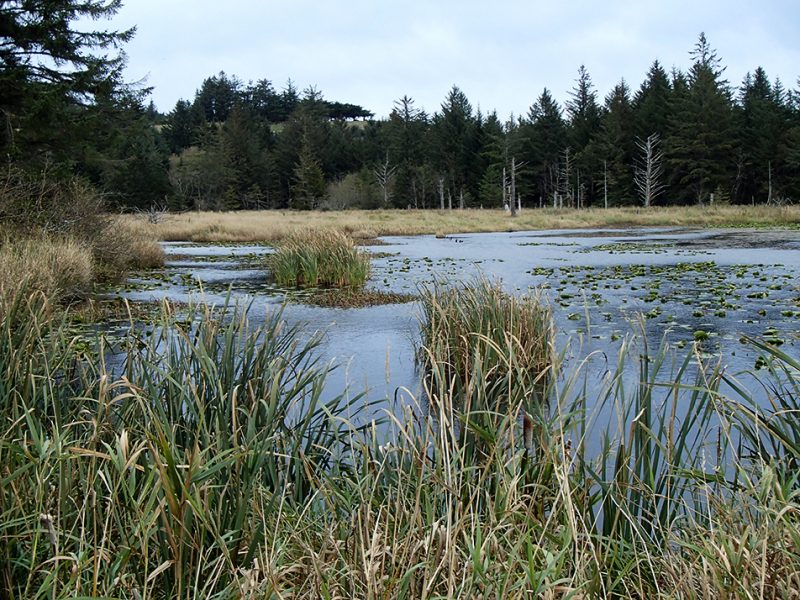
- December 1, 2022
- Joan Drinkwin
- Announcement
- 0 comments
The Pacific Marine and Estuarine Fish Habitat Partnership (PMEP) requests proposals for projects that will advance fish habitat conservation and restoration along the West Coast. PMEP is seeking project proposals that restore, enhance, or protect habitats for PMEP focal species within nearshore marine and estuarine systems (with an emphasis on habitat connectivity) or proposals that increase our understanding of fish habitats in estuarine and nearshore marine waters.
The project, or portion of a project, that PMEP funds must be completed within two years of receipt of funding and all PMEP funding and matching funds should be spent during that time. Project sponsors should assume that funding will be received in Summer of 2024.
Strong project proposals that request less than $100,000 will be given precedence in an effort to fund a diverse portfolio of projects. However, proposals of particular merit may be funded at a higher level at the discretion of the review panel. Please refer to the full RFP for more details.
All projects must show 1:1 non-federal financial match with the exception of projects proposed by tribal sponsors.
How to Apply
To apply for funding, interested applicants should complete and submit the online application. Please read the full RFP for instructions regarding what information to include and the preferred format for information. Incomplete or late applications will not be considered. The deadline for project proposal submissions is 5:00PM Pacific Time, Friday, February 17, 2023.
Find the Request for Proposals with application instructions HERE.
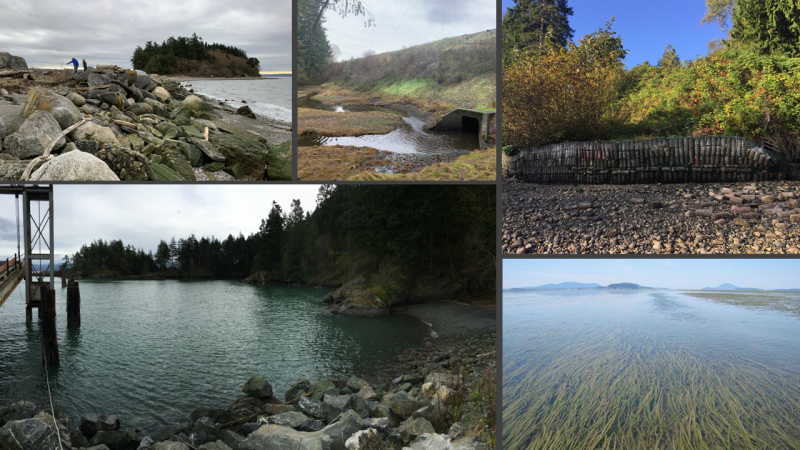
- June 29, 2022
- Joan Drinkwin
- Announcement, Funding
- 0 comments
PMEP is pleased to announce the award of over $230,000 to the following five fish habitat restoration projects for 2022.
- Sequalitchew Creek Estuary Restoration Design Alternatives
- Polnell Point Armor Removal and Restoration
- Aiston Preserve Nearshore Restoration
- Eelgrass restoration in Washington & Oregon
- Zangle Cove Restoration
These projects represent important conservation priorities of PMEP, restoring eelgrass, nearshore sediment transport processes, and habitat connectivity. The projects were evaluated by a PMEP review panel and the PMEP Steering Committee and the board of the National Fish Habitat Partnership against PMEP and national conservation priorities. Funding comes from the National Fish Habitat Partnership and will be managed through the U.S. Fish and Wildlife Service.
For more detailed descriptions of the funded projects check out our funded projects page, or take a look at our interactive story map.
Since 2006, the National Fish Habitat Partnership has supported over 1,000 projects benefiting fish habitats in all 50 states. The National Fish Habitat Partnership works to conserve fish habitats nationwide; leveraging federal, state, tribal, and private funding resources to achieve the greatest impact on fish populations through priority conservation projects of 20 regionally-based Fish Habitat Partnerships.
Make sure you’re subscribed to our newsletter to keep up to date with future funding opportunity announcements!
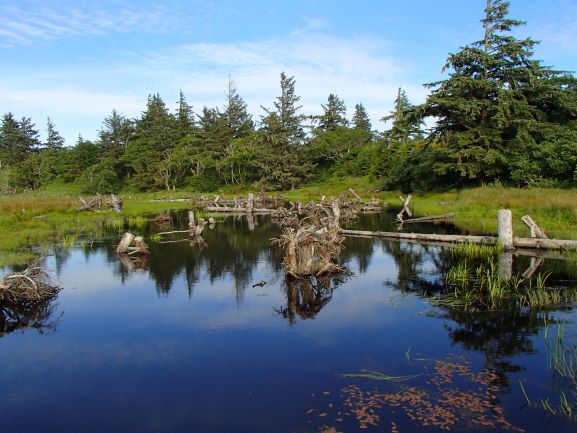
- December 6, 2021
- Joan Drinkwin
- Announcement, Funding
- 0 comments
The Pacific Marine and Estuarine Fish Habitat Partnership is now accepting proposals for funding for fish habitat restoration and protection projects for its FY2023 funding cycle. PMEP will award an estimated $100,000-$350,000 in 2023 for projects that advance its mission.
Please access the full Request for Proposal (RFP) and application instructions HERE.
The deadline for proposals is 5PM PST February 25, 2022.
NOTE: IF YOU HAD TROUBLE ACCESSING THE JOTFORM APPLICATION, PLEASE TRY AGAIN. THE PROBLEM HAS BEEN FIXED.
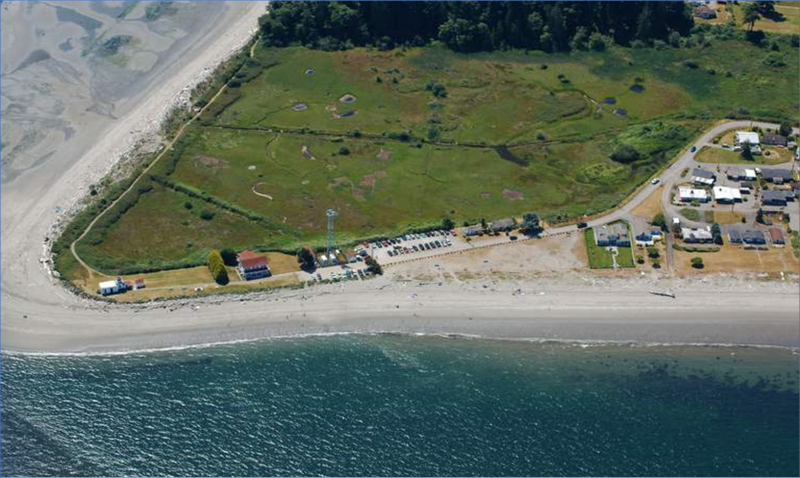
- May 11, 2021
- Joan Drinkwin
- Announcement, Funding
- 0 comments
NOAA is funding four projects sponsored by National Fish Habitat Partnerships designed to enhance recreational fisheries engagement and restore habitat through the coastal National Fish Habitat Partnerships. PMEP is supporting the restoration of tidal influence to the Point No Point Estuary in Kitsap County, Washington. The Mid Sound Fisheries Enhancement Group is collaborating with the Kitsap County Parks Department to remove a malfunctioning tide gate to convert freshwater wetlands back into salt marsh habitat. Restoring tidal connectivity in this 32-acre area will provide critical nearshore habitat for juvenile Chinook salmon by restoring ecosystem processes at a key site along migratory salmon routes in and out of Puget Sound. the project also engages the local North Kitsap Puget Sound Anglers and other local fishers to collect data before and after restoration. Local engagement efforts will include education and outreach around the project and its importance. The project supports the NOAA Fisheries Puget Sound Chinook Recovery Plan, is integrated with regional salmon recovery efforts and helps PMEP reach its goal to improve connectivity within estuarine and nearshore fish habitat.
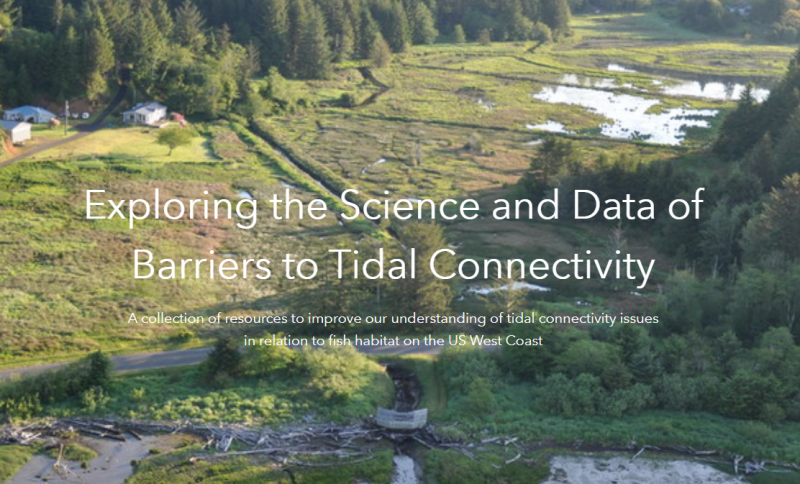
- April 23, 2021
- Joan Drinkwin
- Announcement, Data and Assessments
- 0 comments
PMEP, in collaboration with the California Fish Passage Forum and the Pacific Lamprey Conservation Initiative, has launched a new Barriers to Tidal Connectivity data hub of resources developed through a collaborative project to improve our understanding of tidal connectivity issues along the US West Coast.
The data hub includes a data catalog of West Coast datasets of culverts, tide gates, levees and dikes, railways, and roads as well as maps identifying tidally restricted areas. This innovative data catalog assembles datasets managed by a variety of agencies including California’s Passage Assessment Database (PAD), Oregon’s Fish Passage Barriers, Washington Department of Fish and Wildlife Fish Passage Inventory, and the Washington Levee Inventory. Viewers can access all these datasets and visualize the extent of barriers to tidal connectivity for purposes of restoration, research, and planning.
Through the data hub, you can also access copies and recordings of presentations given at the recent Barriers to Tidal Connectivity Symposium held October 28, 2020. And other resources and reports can be accessed through the hub.
This data hub is a product of a collaborative effort by the three fish habitat partnerships made possible with generous support from the Association of Fish and Wildlife Agencies.
You can find out more on Barriers to Tidal Connectivity on the PMEP website by clicking on the projects tab, or you can head directly to the data hub here.
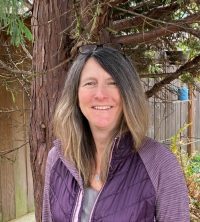
- March 16, 2021
- Joan Drinkwin
- Announcement
- 0 comments
We want to give a warm welcome to our newest PMEP steering committee member, Irma Lagomarsino! Irma is a Senior Policy Advisor for the Oregon/Washington Coastal Office of NOAA Fisheries in Portland, Oregon, helping to build strategic collaborative solutions for salmon recovery with a particular emphasis in western Oregon. Previously, Irma served as the Assistant Regional Administrator for NOAA Fisheries California Coastal Office and as the Northern California Office Supervisor where she oversaw Endangered Species Act programs for listed salmon and steelhead. In 2014, Irma received the Bureau of Reclamation’s John W. Keys, III Award for Building Partnerships and Strengthening Relationships for her collaborative work with the U.S. Fish and Wildlife Service and Reclamation. As a key leader for NOAA Fisheries, she helped forage the precedent-setting Klamath Agreements with agricultural, tribal and fishing communities, conservation organizations, states and other federal agencies. With 30 years of experience in the public sector, Irma focuses on building effective partnerships across-sectors to find innovative approaches for advancing the conservation of NOAA trust resources while supporting sustainable land use and communities. A native of California, she received her B.S. Degree in Marine Biology at the University of California at Berkeley and a M.S. Degree in Marine Environmental Science from the State University of New York at Stony Brook.
